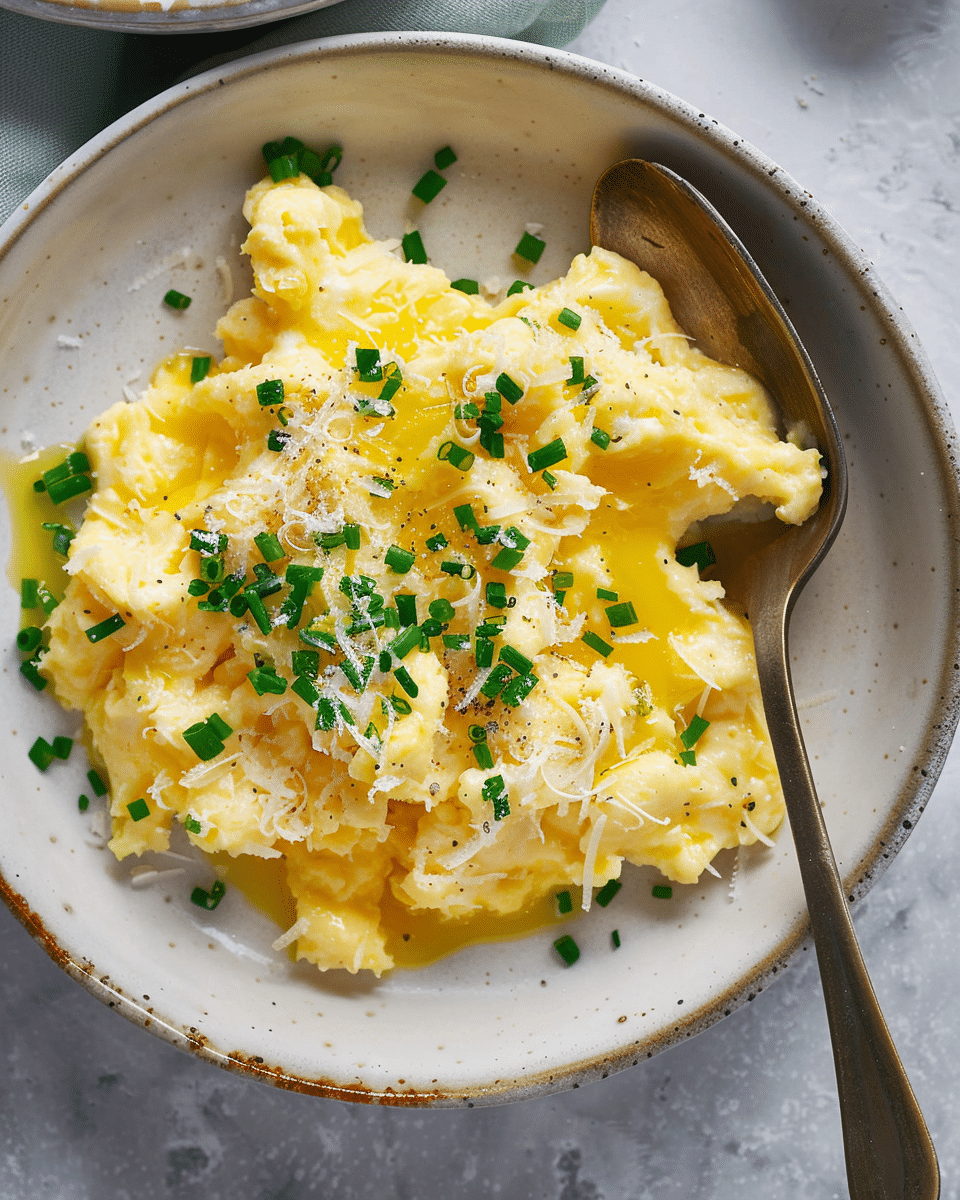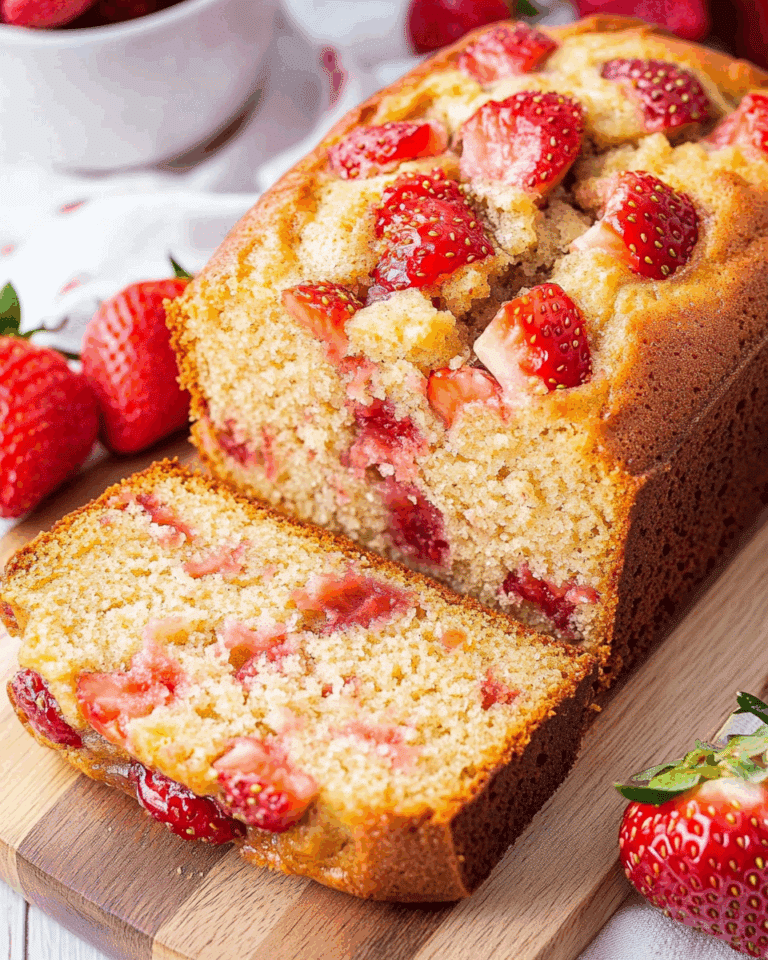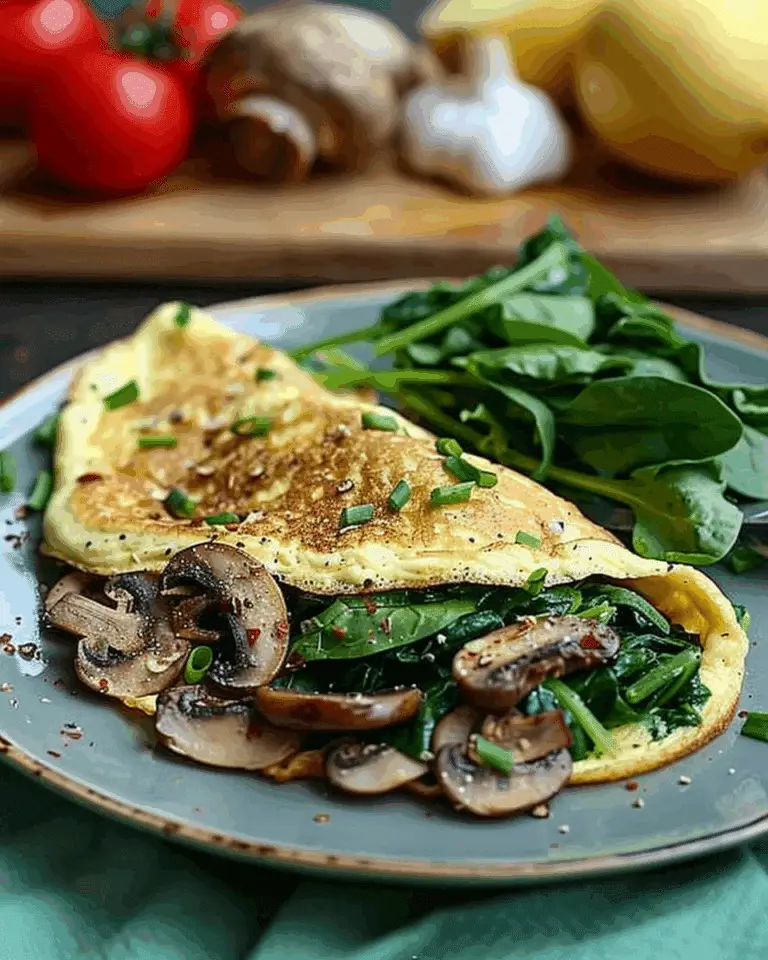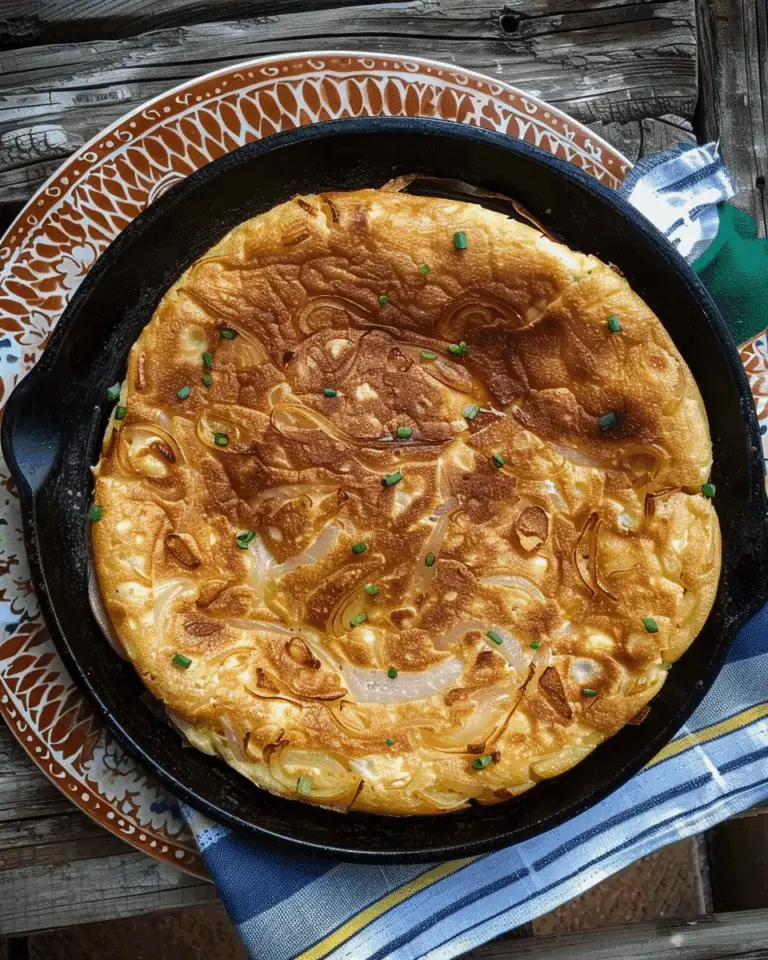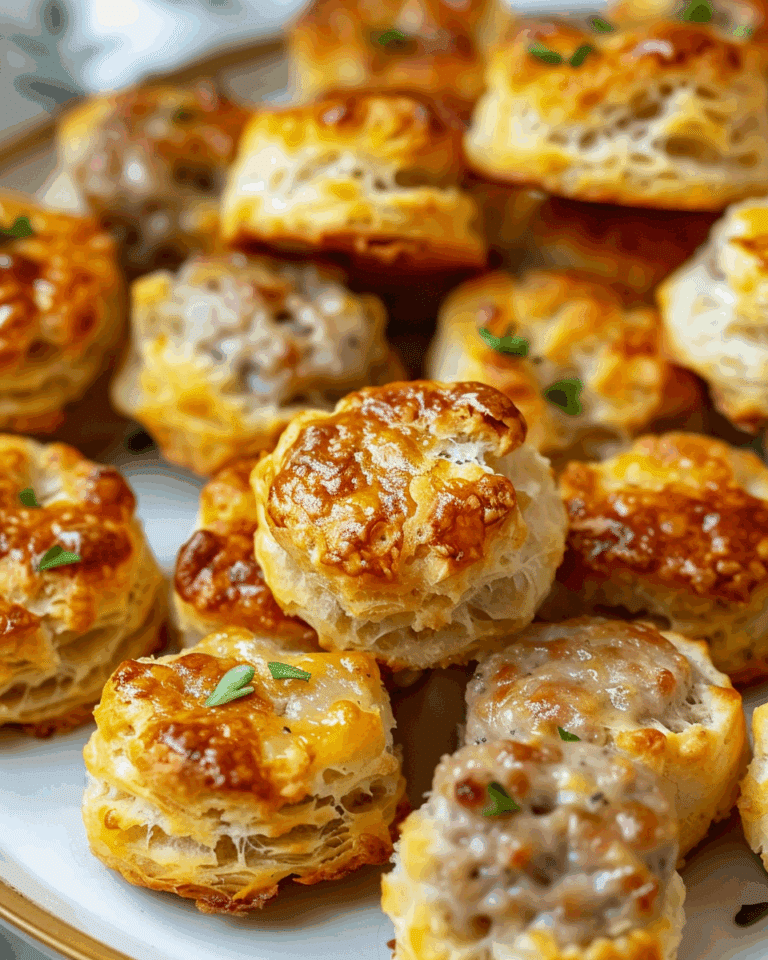Why You’ll Love Perfect Scrambled Eggs Recipe
You’ll love this recipe because it turns a basic breakfast staple into something delightfully elevated: the eggs come out soft yet well‑set, not mushy or overcooked. The method works even if you don’t have a non‑stick pan, and the tips included will help you avoid sticking and achieve consistent results.
It offers flexibility (add cheese, herbs, dairy or non‑dairy) and delivers on texture and flavour with minimal fuss.
Ingredients
(Tip: You’ll find the full list of ingredients and measurements in the recipe card below.)
-
6 eggs
-
2 tablespoons half and half, heavy cream or whole milk
-
¼ teaspoon fine salt
-
1 tablespoon unsalted butter, quartered
-
Optional: 1 teaspoon finely snipped fresh chives, plus more for garnish
-
Optional: Grated cheese, if desired for serving
Directions
-
Place a silicone or rubber spatula and a large plate near the stove for later. In a 2‑cup liquid measuring cup or medium bowl, combine the eggs, half and half (or cream/milk) and the salt. Use a small whisk (or fork) to mix until the mixture is evenly yellow (no visible separate whites).
-
Heat a large skillet (stainless steel or cast iron) over medium heat. Do not use a non‑stick pan for this method (because of the high preheat temperature). Let the pan preheat until it’s hot enough that when you flick a few drops of water onto it, the drops “dance” or hop across the surface then evaporate almost immediately. If they splatter and bubble, the pan is not hot enough. If the butter browns immediately when added, the pan is too hot — cool and start over.
-
Add the butter (and the chives, if using). Let the butter melt and swirl it to coat the pan. Once the butter has foamed and settled, pour in the egg mixture.
-
Let the eggs rest undisturbed for about 10–15 seconds, until you see a thin white rim forming around the edge of the pan. Then stir the eggs gently but thoroughly, making sure to get underneath them (from the base of the pan) with the spatula.
-
Let the eggs rest another 10–15 seconds, then stir again, tilting the pan if needed so runny parts reach the hot surface. Continue this cycle of resting then stirring more often as the eggs heat up, until they are still shiny but mostly set (about 1½ to 2 minutes total cooking time).
-
Immediately transfer the eggs to the plate to stop cooking. Add grated cheese and additional chives, if desired. Serve while warm.
Servings and timing
-
Serves: 2 people (with 6 eggs)
-
Prep time: ~5 minutes
-
Cook time: ~5 minutes
-
Total time: ~10 minutes
If you double the recipe, use a larger skillet and note the eggs may take a little longer to cook.
Variations
-
Dairy‑free version: Use plain unsweetened non‑dairy milk (e.g., almond milk or cashew milk) instead of the half‑and‑half/cream/whole milk. Use olive oil or avocado oil instead of butter.
-
Cheese variation: Stir in grated cheddar, Parmesan, Monterey Jack, crumbled goat cheese or feta just before serving for added creaminess and flavour.
-
Herb add‑ins: Fresh chopped chives are recommended, but you can also use finely chopped parsley, basil or tarragon. Add herbs right at the end (after transferring off heat) to keep them fresh.
-
Veggie style: Sauté finely diced vegetables (e.g., bell pepper, tomato, spinach or mushrooms) separately in the skillet, then fold into the scrambled eggs after transferring them off the heat.
-
Spice it up: Serve with a drizzle of hot sauce, a dollop of sour cream or salsa for a Tex‑Mex twist.
Storage/Reheating
-
Storage: Store any leftover scrambled eggs in an airtight container in the refrigerator for up to 1–2 days.
-
Reheating: To reheat, use a low‑heat skillet or microwave at short intervals (20‑30 seconds) stirring halfway through to avoid overcooking. You may add a splash of milk or cream when reheating to help restore some moisture.
FAQs
What kind of pan should I use?
A stainless steel or cast‑iron skillet is recommended for this method, because the pan needs to be preheated until hot enough to flick water drops and have them dance. Non‑stick pans are not recommended for this particular preheating method.
Why add milk or cream to the eggs?
Adding dairy helps tenderise the eggs, gives a more appealing pale yellow colour, reduces the “eggy” flavour slightly and yields a more pleasant texture.
When should I season the eggs with salt?
Salt should be added early — when whisking the eggs and dairy. This helps tenderise the eggs and contributes to better texture.
How can I tell when the pan is hot enough?
When you flick a few drops of water at an angle onto the preheated pan, they should dance or hop across the surface and then evaporate almost immediately. If they bubble and splatter, the pan is not hot enough. If the butter browns immediately when added, the pan is too hot.
Why do I need to transfer the eggs immediately once cooked?
Because the pan remains hot and residual heat can continue cooking the eggs, transferring them off the heat stops the cooking process and prevents overcooking.
Can I make this recipe for more than 2 servings?
Yes — you can double the recipe (or more) using a larger skillet, but be aware that cooking time may increase slightly because of the larger volume of eggs. Stirring more frequently may be helpful.
What happens if I stir the eggs too often or too little?
If you stir too little, you may end up with large curds and uneven texture. If you stir too often (especially early on), you may lose the opportunity to let the eggs rest and set properly. The key is alternating short periods of rest and gentle stirring so the eggs form tender curds.
How can I make the eggs fluffier or softer?
To get softer, fluffier eggs: whisk them well until fully uniform, include a bit of dairy, preheat the pan correctly, and focus on gentle cooking with minimal stirring until they begin to set, then stir more frequently toward the end. Remove from heat while still slightly shiny.
Are there tips for avoiding eggs sticking to the pan?
Yes: preheat the pan properly, ensure it’s hot enough before adding butter and eggs, use the right pan (stainless or cast‑iron), don’t rush the process, and transfer the eggs promptly when done. Also, scraping the pan right away while warm helps clean‑up.
Can I use this method if I only have a non‑stick pan?
Technically you can cook scrambled eggs in a non‑stick pan, but this specific technique is designed for stainless steel or cast‑iron skillets. Preheating a non‑stick pan to the required temperature may damage the coating and release fumes, so it’s not recommended by the author for that pan type.
Conclusion
This scrambled‑eggs recipe empowers you to make perfect, tender, and delicious eggs at home with confidence. The key lies in the method — preheating the pan properly, adding dairy and salt early, and gently alternating resting and stirring during cooking. Whether you’re after a simple breakfast or a base for more elaborate add‑ins like cheese, herbs or veggies, this technique will serve you well. Give it a try and enjoy the upgraded classic.

Perfect Scrambled Eggs
- Total Time: 10 minutes
- Yield: 2 servings
- Diet: Vegetarian
Description
This recipe provides a simple yet foolproof method for making perfect scrambled eggs—soft, creamy, and full of flavor every time.
Ingredients
- 4 large eggs
- 2 tablespoons milk or water
- Pinch of fine salt
- Freshly ground black pepper, to taste
- 1 to 2 teaspoons unsalted butter or extra-virgin olive oil
Instructions
- Crack the eggs into a bowl and add the milk or water, salt, and a few twists of pepper. Whisk until the mixture is well combined and slightly frothy.
- Heat a non-stick skillet over medium-low heat. Add the butter or oil and let it melt, coating the bottom of the pan.
- Pour the egg mixture into the skillet. Let the eggs sit undisturbed for a few moments until they start to set around the edges.
- Using a silicone spatula, gently push the eggs from the edges toward the center. Continue to cook, stirring slowly and gently, until the eggs are mostly set but still slightly glossy and soft.
- Remove the skillet from the heat. The residual heat will finish cooking the eggs. Serve immediately.
Notes
- Don’t overcook—the eggs should be just set and creamy.
- Use fresh eggs for best flavor and texture.
- Customize with herbs, cheese, or cooked vegetables if desired.
- Prep Time: 5 minutes
- Cook Time: 5 minutes
- Category: Breakfast
- Method: Stovetop
- Cuisine: American
Nutrition
- Serving Size: 1 serving
- Calories: 150
- Sugar: 1g
- Sodium: 200mg
- Fat: 12g
- Saturated Fat: 4g
- Unsaturated Fat: 6g
- Trans Fat: 0g
- Carbohydrates: 1g
- Fiber: 0g
- Protein: 10g
- Cholesterol: 370mg

